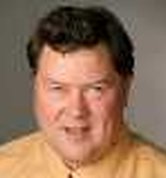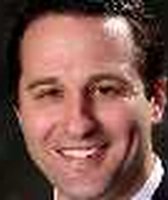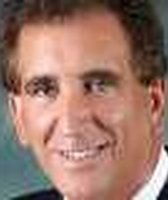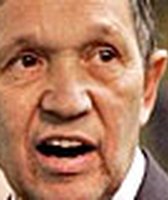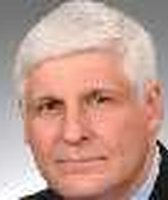Stand up for the facts!
Our only agenda is to publish the truth so you can be an informed participant in democracy.
We need your help.
I would like to contribute

There's still plenty of fact checking to be done, even with the end of campaigning.
One thing that's clear this election season: Neither Democrats nor Republicans have a monopoly on truth.
To the contrary, their campaign ads suggest that concept is somewhat elusive for both.
Since PolitiFact Ohio was launched three months ago, it has reviewed more than 80 statements made by candidates and their surrogates. Those statements were gathered from election ads, interviews and appearances, news conferences and debates. PolitiFact Ohio analyzes them for accuracy and gives them a Truth-O-Meter rating, ranging from True to Half True to False.
The most ridiculous False claims are rated Pants on Fire.
The average for all statements rated the past three months: between Barely True and Half True.
That holds true for each party, too.
PolitiFact Ohio found nine statements (so far) worthy of the Pants on Fire rating -- five from Democrats and four from Republicans. False ratings were similarly even: six for Democrats and seven for Republicans.
At the other end of the scale, 15 statements from Democrats and 13 from Republicans were found to be True or Mostly True. That means, though, that fewer than 30 of the more than 80 statements got ratings above Half True.
Politicians took notice. The influence of PolitiFact Ohio items could be found in many campaigns.
• An early Truth-O-Meter ruling rated as Half True a statement by Republican Rob Portman, a candidate for the U.S. Senate, because it overstated the number of jobs lost in Ohio since passage of the federal stimulus package in February 2009. More recently, Portman's campaign released a new ad that has criticized Democratic opponent, Lt. Gov. Lee Fisher, for supporting the stimulus and used a more accurate, reduced job loss figure. PolitiFact Ohio rewarded that with a rating of True.
• PolitiFact Ohio ratings have appeared in candidate ads, along with newspaper headlines, as cited sources for the statements made in the ads. Candidates have touted their ratings, or those that dinged their opponents, in e-mails to their supporters and news releases to the media.
Thursday, for example, Democratic Treasurer Kevin Boyce's campaign released a statement after the Ohio Elections Commission found probable cause that an attack ad from Boyce's opponent, GOP State Rep. Josh Mandel, contained false statements. "But don't just take our word for it," the news release said, noting that the commission's vote came on the heels of Politifact Ohio finding the statement False.
• Strickland running mate Yvette McGee Brown, decrying an attack on the governor by the Republican Governors' Association, defiantly told those at a September rally in Cleveland, "And I wish PolitiFact would go check that."
Although politicians took notice of PolitiFact Ohio, they did not shy away from providing material to test the Turth-O-Meter or from defying the rulings of False. An attack ad by the campaign of Jon Husted, the Republican candidate for secretary of state, against his Democratic opponent, Maryellen O'Shaughnessy, continued to air after PolitiFact Ohio rated as False its claim that she voted to raise her own pay. The elections commission on Thursday found that with that ad, too, there was probable cause that it contained false statements.
Will politicians ever stop lying? Don't count on it.
The United States has a long history of negative campaigning, and ads that stretch the truth, in part because such tactics work.
"All of the research I'm aware of indicates that negative campaigning is effective," said Jeff Peake, chairman of the political science department at Bowling Green State University.
The most negative tend to be from surrogates -- party organizations or political action groups that place ads on behalf of a candidate.
"The candidate they're supporting isn't connected with it, so they can really take the gloves off," Peake said
And they do get people's attention, said Greg Haas, a Democratic strategist who has been involved in Ohio campaigns for more than 30 years.
"TV is powerful because it's so intrusive. You talk to people who will tell you they don't watch broadcast television, but when you ask them about political ads, they can tell you something," Haas said. "That's the real power of them."
The negative ads, though, are not necessarily the most cost-effective way to sway voters.
"Television advertising, positive or negative, doesn't tend to sway partisans, particularly strong partisans," said Melissa Miller, an assistant professor of political science at BGSU. "Where you want to look for their effect is the swing voters. The problem is that the swing voters in the middle are less attentive."
In a state like Ohio, those voters are coveted.
Former Ohio GOP Chairman Bob Bennett says the nature of Ohio's electorate makes those votes particularly important and is a reason the attack ads continue. Ohio is narrowly divided philosophically, he said, and divided geographically between the Northeast and Southwest. That makes statewide elections extremely competitive.
So will the negative ads ever end?
Haas has his doubts.
"It's going to take a number of races where candidates just completely avoid any mention of their opponent and win on a positive note before that's going to change."
Which means PolitiFact Ohio could be kept busy for a long time.
Our Sources
PolitiFact Ohio Truth-O-Meter rulings.
Telephone interview with Bob Bennett, former chair of the Ohio Republican Party, Oct. 28, 2010
Telephone interview with Greg Haas, Democratic strategist, Oct. 28, 2010
Telephone interview with Jeff Peake, chair of the political science department at Bowling Green State University, Oct. 28, 2010
Telephone interview with Melissa Miller, assistant professor of political science, Bowling Green State University, Oct. 28, 2010
